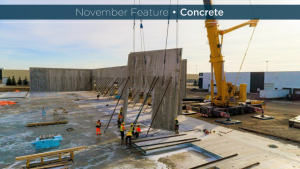Canadian architects and allies spent a sobering three hours this week digesting the role the profession has played in the oppression of Indigenous Canadians over the centuries.
The reflections were part of the Royal Architectural Institute of Canada’s commemoration of the National Day for Truth and Reconciliation, held Sept. 30. The RAIC presented a two-part webinar series on back to back days Sept. 26 and 27.
RAIC chair Jason Robbins served as host of the second session, billed as Reconciliation and Design, and explained the sessions are intended to build “awareness, compassion and understanding” in the architectural community relating to the history of residential schools and the impact they have had on First Nations, Metis and Inuit communities.
At one point, after keynote speaker Naomi Ratte finished a presentation highlighting such sorry chapters in Canadian history as the dislocation of whole communities and architects’ roles in the design of barracks-style residential schools, Robbins said, “It was hard to listen to. Because it was so amazing, because you tie us to that work that happened and the work that we need to do.”
Indigenous architect Patrick Stewart is co-chair of the RAIC’s Truth and Reconciliation task force. He explained the purpose of the advocacy group is to review the Truth and Reconciliation Commission’s final report and identify which of the commission’s calls to action and calls for justice relate to the RAIC’s mission. The end goal is to “identify meaningful action for the organization to engage in,” Stewart said.
Ratte, of the Peguis First Nation in Manitoba, is a landscape architecture intern at the firm NVision. She noted that the 94 recommendations of the Truth and Reconciliation Commission’s final report do not specifically mention architecture.
“To me, and a lot of people as well, this does not mean that the profession of architecture is exempt from the actions that are proposed in these calls to action,” she said.
“We are all responsible to walk the path of reconciliation.”
Recommendation 79 calls for commemoration of historic sites to develop a reconciliation framework, she noted. A site close to home for her, Ratte said, is the infamous Portage la Prairie boarding school in Manitoba, which recently received heritage designation.
“How can the design community respond in ways that can meaningfully recognize this historic site and its atrocities?” she asked.
The history lesson continued. In 1965, Ratte noted, the federal Department of Public Works was offering architects design work for the St. Mary’s Indian residential school in Mission City, B.C.
“I share this information with you not in a way to shame the past but to bring to the forefront, as creators of the built environment, we really need to carry with us a sense of responsibility and understanding of the legacy and ethics of our work.”
The Mohawk Institute in Brantford, Ont. was the oldest residential school on Canada. Ratte showed architectural drawings from 1922 proposing alterations. Architects clearly contributed to the misery at such places, she suggested.
“These schools are often built in a manner that was confining and imposing,” said Ratte. “They were known to be poorly built and overcrowded and unsanitary. In many accounts, residential schools had limited access to health care services. There were no clean water supplies and inadequate drainage.”
Ratte also recalled three different episodes of community dislocation. One of them involved relocating Indigenous residents of Tadoule Lake, Man. to Churchill, Man. The residents considered it a genocide.
“There were many, many deaths in the community,” she said. “Homes were very poorly built and poorly insulated. So many homes were burned down because people would light fires within their house to keep it warm.”
Reconciliation will also require architects and others to attempt to better understand the importance of land and natural spaces to Indigenous peoples, Ratte said. As a young landscape architect, she struggled to reconcile her professional responsibilities in the context of her Indigeneity, she said. It took deep conversations with an elder to come to grips with the many dimensions of “wendaaji’owin” — “that which sustains life.”
Ratte also highlighted a paper written by Matthew Hickey of Two Row Architect explaining the difference between place-making, a typical architectural objective, and place-keeping. The latter, Hickey explained, “takes into account the full life cycle of site and place…Place-keeping is understanding the importance of that place for all living things.”
The session also featured a panel discussion featuring Robbins, Stewart, Ratte and Indigenous architect Alfred Waugh on the current state of the profession for Indigenous designers. Waugh said Indigenous architects must become more business savvy and strive to be recognized as prime consultants on projects more often.
Follow the author on Twitter .







Recent Comments
comments for this post are closed